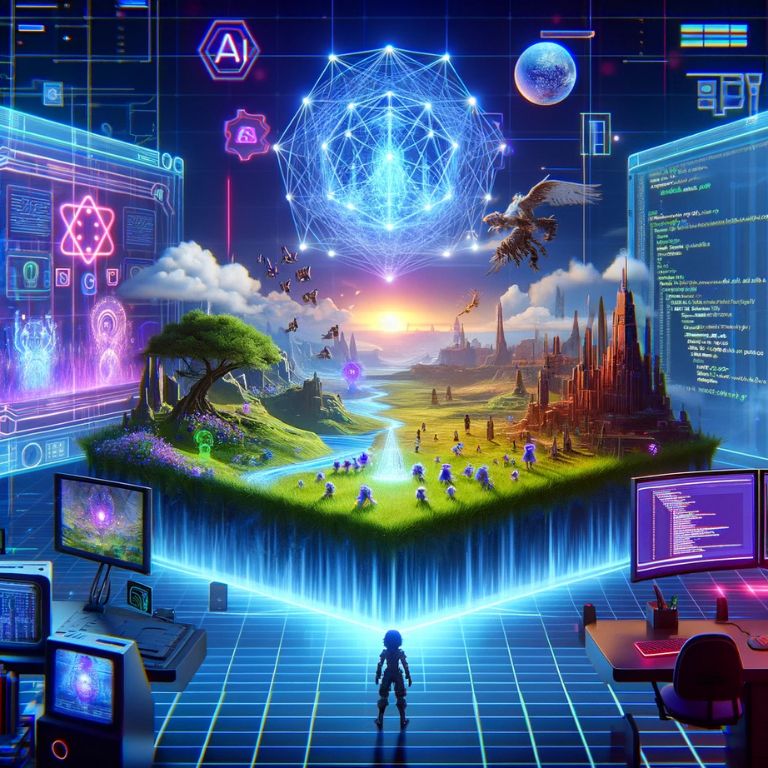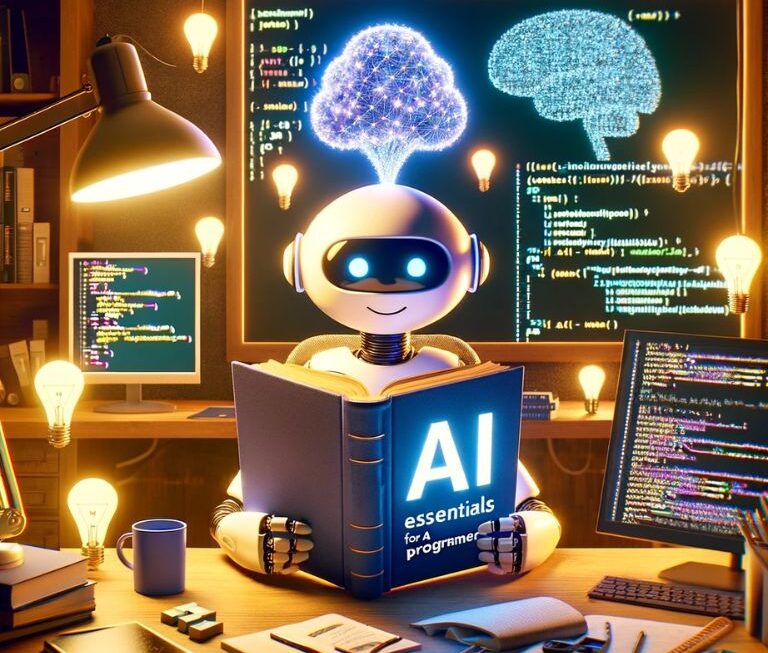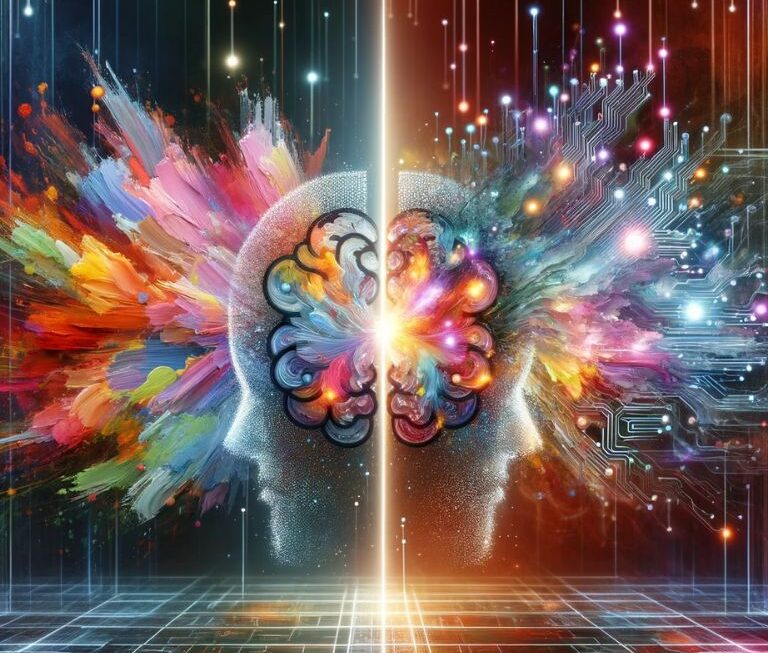The realm of video games has always been a fertile ground for technological innovation, and the advent of generative artificial intelligence (AI) marks a new chapter in this evolving narrative. Generative AI, a subset of artificial intelligence, is not just an incremental advancement; it’s a paradigm shift that is redefining the boundaries of game development and player experience.
Understanding Generative AI
At its core, generative AI refers to the aspect of artificial intelligence focused on creating new content – be it images, sounds, or in the case of video games, elements like environments, character dialogues, and even entire levels. Unlike traditional AI, which is often pre-programmed to respond in predetermined ways, generative AI can produce novel, unpredictable outcomes. This capability stems from advanced machine learning techniques, particularly deep learning models, which can analyze vast datasets and generate outputs that mimic the original data in a creative, dynamic fashion.
Generative AI: A Game Changer in Video Gaming
The integration of generative AI into video game development is not just about enhancing graphics or optimizing performance. It’s about crafting an immersive, dynamic world that reacts and evolves in response to player actions. Imagine game environments that adapt to your play style, creating challenges that are always fresh and engaging. Picture NPCs (Non-Playable Characters) with dialogues that aren’t just pre-written scripts but are generated in real-time, offering more natural, varied interactions.
The Scope of Generative AI in Gaming
The applications of generative AI in gaming are vast and varied:
- Dynamic Game Environments: Generative AI can create environments that change with each playthrough, offering a unique experience every time.
- Realistic NPC Interactions: AI-generated dialogues and behaviors for NPCs make for more lifelike and unpredictable interactions.
- Procedural Content Generation: From levels and maps to storylines, generative AI can create a plethora of content, reducing the workload on human developers and offering endless variety to players.
- Enhanced Creativity: By handling routine tasks, generative AI allows human developers to focus on more creative aspects of game design.
The Impact of Generative AI
The impact of generative AI on the gaming industry is profound. It’s not just about creating games that are more engaging or visually stunning; it’s about redefining the very nature of game design and interaction. With generative AI, games can evolve in real-time, responding to and learning from the player’s behavior. This leads to a more personalized gaming experience, where the game world feels alive and responsive.
As we stand on the brink of this new era in gaming, it’s clear that generative AI is not just a tool for game developers; it’s a catalyst for a revolution in how we experience and interact with virtual worlds. The potential of generative AI in gaming is limited only by the imagination of developers and players alike, promising an exciting future for the industry.
Historical Evolution of AI in Video Games
The journey of artificial intelligence in video games is a tale of continuous evolution, marked by groundbreaking innovations and transformative technologies. From the rudimentary AI of the early arcade games to the sophisticated, generative AI systems of today, the progression has been nothing short of revolutionary.
The Dawn of AI in Gaming
The inception of AI in video games can be traced back to the 1950s and 1960s, with games like ‘Nim’ and ‘Spacewar!’. These games featured basic AI algorithms capable of challenging human players in relatively simple environments. The AI in these games was rudimentary, following predefined rules and patterns.
| Year | Game | AI Innovation |
|---|---|---|
| 1951 | Nim | First instance of a computerized game with AI |
| 1962 | Spacewar! | Featured competitive AI in a space combat setting |
| 1978 | Space Invaders | Introduced adaptive difficulty levels |
| 1980 | Pac-Man | AI with distinct personalities for each enemy |
| 1997 | Chess (IBM’s Deep Blue) | Defeated world chess champion Garry Kasparov |
| 2005 | F.E.A.R. | Advanced AI with context-sensitive behaviors |
These milestones represent significant leaps in AI complexity and capability, setting the stage for more advanced applications in gaming.
The Shift to Generative AI
The transition from basic AI to generative AI in video games began in the early 21st century. This shift was fueled by advancements in machine learning and neural networks, enabling AI to not just follow predefined rules but to generate new content and responses based on learned data.
Generative AI: A New Paradigm

Generative AI marked a paradigm shift in game development. Unlike its predecessors, generative AI is not limited to scripted responses. It can create new game elements dynamically, offering a level of unpredictability and variety that was previously unattainable.
- Early 2000s: Introduction of AI that could adapt to player actions.
- Mid-2000s: Emergence of AI capable of procedural content generation.
- 2010s: Integration of deep learning, allowing for more sophisticated and creative AI applications in games.
The Evolutionary Impact
This evolution from basic to generative AI has had a profound impact on the gaming industry. Games have become more immersive and engaging, with AI contributing to more realistic and dynamic environments. The ability of AI to learn and adapt has opened new frontiers in game design, allowing for personalized gaming experiences and endless replayability.
The historical evolution of AI in video games is a testament to human ingenuity and technological advancement. From simple, rule-based algorithms to complex, generative systems, AI has grown alongside the gaming industry, continually pushing the boundaries of what’s possible in virtual worlds.
The Mechanics of Generative AI in Game Design
Delving into the mechanics of generative AI reveals how it is reshaping the landscape of video game development. This section explores the underlying principles and applications of generative AI in gaming, illustrating how it enhances the creative process and player experience.
Understanding the Core of Generative AI
Generative AI operates on the principles of machine learning, particularly through models like neural networks and deep learning. These models are trained on large datasets, enabling them to generate new content that is similar yet distinct from the original data. In gaming, this translates to AI that can create unique game elements, from landscapes to character dialogues.
Key Components of Generative AI in Gaming
- Data Analysis and Learning: AI algorithms analyze existing game data (like level designs, character models, dialogues) to understand patterns and styles.
- Content Generation: Based on this analysis, the AI then generates new content that aligns with the learned patterns but with novel variations.
- Adaptation and Evolution: The AI continuously learns from player interactions, adapting the game environment and elements in real-time.
| Game | AI Feature | Description |
|---|---|---|
| No Man’s Sky | Procedural Universe Generation | Uses AI to create a vast, ever-expanding universe with unique planets and ecosystems. |
| Middle-earth: Shadow of Mordor | Nemesis System | AI generates personalized enemies with distinct behaviors and memories. |
| The Elder Scrolls V: Skyrim | Radiant AI | NPCs have dynamically generated behaviors and interactions based on player actions. |
These examples showcase the diverse applications of generative AI in modern gaming, enhancing depth and replayability.
The Process of Generative AI in Game Design
- Training Phase: AI models are trained using existing game assets and player data.
- Implementation Phase: The trained AI is integrated into the game, where it starts generating content.
- Interaction Phase: Player actions and decisions influence the AI, leading to a dynamic gaming experience.
- Feedback Loop: Player feedback and data are used to further refine the AI’s content generation capabilities.
The Impact on Game Development and Player Experience
Generative AI has revolutionized game development by automating content creation, thereby reducing the time and resources required for game design. For players, it results in a more dynamic and personalized gaming experience, with games that adapt and evolve based on their actions and preferences.
The mechanics of generative AI in game design represent a significant leap forward in the way games are created and played. By leveraging advanced machine learning techniques, developers can craft more immersive, dynamic, and engaging gaming experiences that continue to evolve and surprise players.
Transforming Game Environments with Generative AI
The fourth section of our exploration into generative AI in video game development focuses on how this technology is revolutionizing game environments. Generative AI is not just enhancing the visual appeal of these environments; it’s creating dynamic, ever-changing worlds that respond to and evolve with player interactions.
The Role of Generative AI in Environment Design
Generative AI algorithms are capable of creating vast, intricate game worlds with a level of detail and variation previously unattainable through manual design. This technology uses data from existing environments to generate new landscapes, structures, and ecosystems, making each player’s experience unique.
Dynamic and Adaptive Environments
One of the most significant contributions of generative AI is the creation of dynamic environments that adapt in real-time to player actions. This adaptability can manifest in various ways:
- Environmental Changes: Weather patterns, day-night cycles, and seasonal shifts that respond to gameplay.
- Interactive Elements: Objects and structures in the game world that change based on player decisions and actions.
- Evolving Challenges: Dynamic obstacles and puzzles that adjust to the player’s skill level and strategies.
Games Using Generative AI for Environments
- Minecraft
- AI Feature: Procedural Terrain Generation
- Impact on Environment: Infinite, diverse landscapes created for exploration.
- Elite Dangerous
- AI Feature: Stellar Forge Engine
- Impact on Environment: Generates a realistic Milky Way galaxy with billions of star systems.
- The Long Dark
- AI Feature: Weather System
- Impact on Environment: AI-driven weather patterns that impact survival gameplay.
These examples demonstrate the extensive capabilities of generative AI in crafting immersive and responsive game environments.
Enhancing Player Immersion with AI-Driven Environments
Generative AI elevates player immersion by creating environments that are not just backdrops but active elements of the gameplay. Players find themselves in worlds that feel alive and responsive, where their actions have tangible impacts on the environment.
The Future of Environmental Design in Gaming
The future of environmental design in gaming with generative AI looks promising. We can expect:
- More Realistic Worlds: Enhanced realism in environmental elements, from flora and fauna to weather systems.
- Personalized Environments: Game worlds that adapt to individual player preferences and playstyles.
- Interactive Storytelling: Environments that play a more significant role in narrative development, changing based on the story’s progression.
Generative AI is transforming game environments from static backgrounds into dynamic, interactive worlds. This technology not only enhances the visual and immersive aspects of games but also opens new avenues for storytelling and gameplay, making each player’s journey through these virtual worlds uniquely their own.
Revolutionizing NPC Interactions and Dialogues with Generative AI
The fifth section of our exploration into generative AI in video game development focuses on its impact on Non-Playable Characters (NPCs) and their dialogues. Generative AI is revolutionizing the way NPCs interact with players, making these interactions more realistic, varied, and immersive.
The Evolution of NPC Interactions

Traditionally, NPC interactions in video games were limited to pre-scripted dialogues and behaviors. With the advent of generative AI, these interactions have become more dynamic and lifelike. AI can now generate dialogues and behaviors in real-time, based on the context of the game and the player’s actions.
AI-Generated Dialogues: A New Level of Realism
Generative AI enables NPCs to have dialogues that are not pre-written but are created on the fly. This leads to several advancements:
- Contextual Responses: NPCs can respond to player actions and environmental changes in a realistic and contextually appropriate manner.
- Variability in Conversations: Each interaction with an NPC can be unique, avoiding the repetitiveness of pre-scripted dialogues.
- Emotional Depth: AI can infuse NPC dialogues with emotional depth, reacting differently based on the game’s narrative and the player’s previous choices.
Games with Advanced NPC Interactions
- Red Dead Redemption 2
- AI Feature: Dynamic NPC Interactions
- Description: NPCs remember player actions and react accordingly in future encounters.
- The Witcher 3: Wild Hunt
- AI Feature: Complex Dialogue Trees
- Description: NPCs respond differently based on player choices, affecting the game’s storyline.
- Detroit: Become Human
- AI Feature: Emotionally Responsive NPCs
- Description: NPCs exhibit complex emotional responses, influenced by player decisions.
These examples highlight the advanced capabilities of generative AI in enhancing NPC interactions, contributing to more dynamic and immersive gaming experiences.
Impact on Storytelling and Player Engagement
The use of generative AI in NPC interactions significantly impacts storytelling and player engagement:
- Non-Linear Storytelling: The game’s narrative can branch in various directions based on AI-generated NPC interactions.
- Increased Player Agency: Players have a more significant impact on the game world, as their actions directly influence NPC behavior and dialogues.
- Enhanced Replayability: The variability in NPC interactions encourages players to replay the game to explore different outcomes.
The Future of NPC Interactions
Looking ahead, the potential for NPC interactions powered by generative AI is vast:
- More Sophisticated AI Personalities: Future NPCs could have even more nuanced personalities and emotional responses.
- Integration with Voice AI: Combining generative AI with advanced voice synthesis could lead to NPCs with unique voices and speech patterns.
- Adaptive Learning NPCs: NPCs that learn and evolve based on player interactions throughout the game.
Generative AI is transforming NPC interactions from predetermined scripts to dynamic, responsive conversations and behaviors. This advancement not only enhances the realism of the game world but also deepens player immersion and engagement, paving the way for more complex and emotionally resonant gaming experiences.
Challenges and Ethical Considerations in Generative AI
In the sixth section of our exploration into generative AI in video game development, we delve into the challenges and ethical considerations that accompany this groundbreaking technology. While generative AI offers immense potential, it also raises important questions and challenges that need to be addressed.
Navigating the Challenges of Implementing Generative AI
The integration of generative AI into video games is not without its hurdles. Developers face several challenges:
- Complexity in Development: Implementing generative AI requires advanced knowledge in machine learning and AI, which can be a barrier for some development teams.
- Quality Control: Ensuring that AI-generated content maintains a high standard and is appropriate for the game’s context is crucial.
- Balancing Creativity and AI: Finding the right balance between AI-generated content and human creativity is essential to maintain the artistic integrity of the game.
Ethical Aspects of AI in Games
As AI becomes more advanced, ethical considerations become increasingly important:
- Bias in AI: AI systems can inadvertently perpetuate biases present in their training data, leading to unfair or stereotypical representations in games.
- Player Data Privacy: The use of player data to train and refine AI models raises concerns about privacy and data security.
- AI in Decision-Making: The extent to which AI should influence game narratives and player choices is a topic of ethical debate.
Addressing Ethical Concerns
To address these ethical concerns, several measures can be taken:
- Diverse Training Data: Using a diverse set of data can help mitigate bias in AI-generated content.
- Transparent Data Practices: Being transparent about how player data is used and ensuring it is handled securely can build trust.
- Ethical AI Guidelines: Establishing ethical guidelines for AI in game development can help ensure that AI is used responsibly.
The Future of Ethical AI in Gaming
Looking forward, the gaming industry can take proactive steps to ensure ethical AI use:
- Industry Standards: Developing industry-wide standards for ethical AI use in gaming.
- Collaboration with Ethicists: Working with ethicists to understand the implications of AI in games.
- Continuous Evaluation: Regularly evaluating AI systems for biases and ethical concerns.
While generative AI presents exciting opportunities for the gaming industry, it also brings challenges and ethical considerations that must be carefully navigated. By addressing these issues head-on, developers can harness the full potential of AI in gaming while maintaining ethical integrity and enhancing the player experience
The Future of Gaming with Generative AI
In the seventh and final section of our exploration into generative AI in video game development, we look towards the horizon, envisioning the future of gaming as shaped by this transformative technology. Generative AI is not just a current trend; it’s a driving force that will continue to redefine gaming experiences in profound ways.
Predictions for Generative AI in Gaming
The future of gaming with generative AI holds exciting possibilities:
- Hyper-Personalized Gaming Experiences: Games will adapt in real-time to players’ preferences and playstyles, offering a truly personalized experience.
- Seamless, Infinite Worlds: Generative AI will enable the creation of vast, seamless game worlds with endless exploration possibilities.
- Advanced NPC Evolution: NPCs will become more sophisticated, with the ability to learn and evolve over time, providing deeper and more meaningful interactions.
Upcoming Trends in Generative AI
The gaming industry is likely to witness several emerging trends driven by generative AI:
- AI-Driven Game Design: More aspects of game design, such as level creation and narrative development, will be assisted or driven by AI.
- Enhanced Realism: AI will continue to push the boundaries of realism in games, from graphics to AI behavior.
- Cross-Platform AI Integration: AI systems that learn and adapt across different games and platforms could become a reality.
Potential Impact on the Gaming Industry and Players
The impact of generative AI on the gaming industry and players is expected to be significant:
- For Developers: AI will streamline the game development process, reducing time and costs, and enabling smaller teams to create more complex games.
- For Players: Enhanced immersion, variety, and personalization will elevate the gaming experience, making games more engaging and replayable.
The Role of AI in Shaping Gaming’s Future
Generative AI is poised to play a pivotal role in shaping the future of gaming:
- Innovation in Gameplay: New genres and gameplay mechanics that were previously impossible may emerge.
- Ethical AI Development: As AI becomes more integral to gaming, ethical AI development will become a key focus.
- Community and AI Collaboration: Player feedback and community involvement in AI training could lead to more community-driven game development.
The future of gaming with generative AI is a landscape brimming with potential and possibilities. As this technology continues to evolve, it promises to bring about a new era in gaming — one that is more immersive, personalized, and boundary-pushing than ever before.
The New Era of Video Games
As we conclude our exploration of generative AI in video game development, it’s evident that we are witnessing the dawn of a new era in gaming. Generative AI has revolutionized the industry, enabling the creation of dynamic, ever-evolving game environments and more realistic, responsive NPC interactions. This technology has not only enhanced the player experience through personalized and immersive gameplay but also streamlined the game development process, allowing for greater creativity and efficiency.
Looking ahead, the integration of generative AI in gaming promises a future rich with possibilities. The challenge for developers will be to balance AI-driven innovation with ethical considerations and the human touch that lies at the heart of creative storytelling. As we step into this new era, the gaming industry stands on the cusp of a transformative phase, where the potential of AI in gaming is limited only by our imagination and commitment to responsible development.




